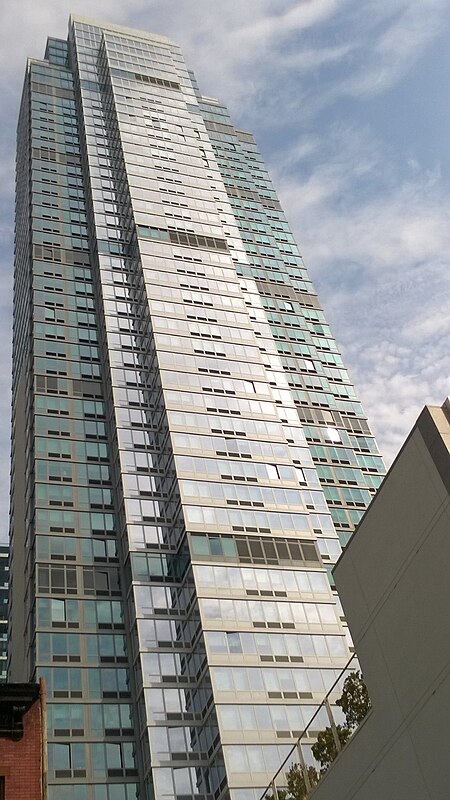388 Bridge Street
2010s architecture in the United States2014 establishments in New York CityCondominiums and housing cooperatives in BrooklynDowntown BrooklynPostmodern architecture ... and 6 more
Residential buildings completed in 2014Residential buildings in BrooklynResidential condominiums in New York CityResidential skyscrapers in New York CitySkyscrapers in BrooklynUse mdy dates from August 2019

388 Bridge Street is a 590-foot residential high-rise skyscraper in Downtown Brooklyn, within New York City. It contains 378 market rate units, mixed between 234 rentals and 144 condominiums. The building was originally under construction as an all condominium tower before the 2000s real estate crash and subsequent Great Recession. Construction halted from 2008 to 2012 due to the recession, but resumed in 2013.When topped out in 2013, it was the tallest building in Brooklyn, passing the four-year-old Brooklyner, until it, too, was passed by AVA DoBro. 388 Bridge Street is now the fourth-tallest in Brooklyn.
Excerpt from the Wikipedia article 388 Bridge Street (License: CC BY-SA 3.0, Authors, Images).388 Bridge Street
Bridge Street, New York Brooklyn
Geographical coordinates (GPS) Address Nearby Places Show on map
Geographical coordinates (GPS)
| Latitude | Longitude |
|---|---|
| N 40.691426 ° | E -73.9854 ° |
Address
Bridge Street 398
11201 New York, Brooklyn
New York, United States
Open on Google Maps









